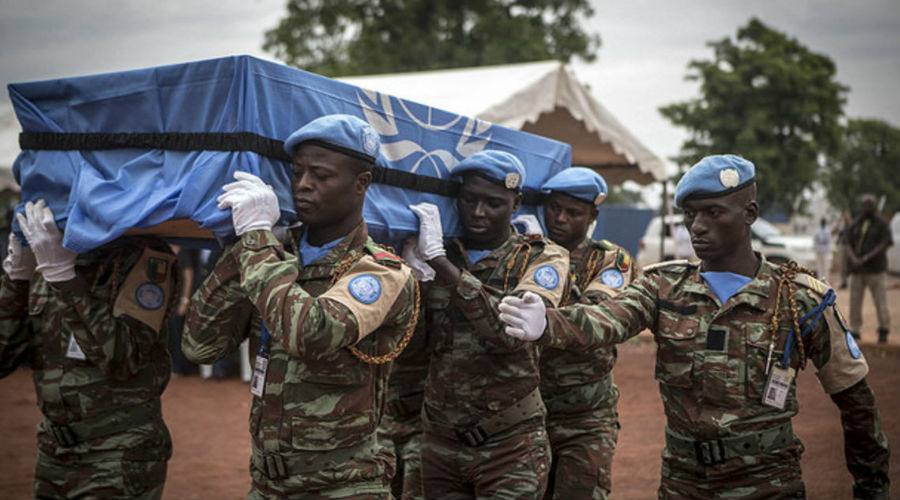Terrorist organizations have remarkably
intensified their attacks against UN Forces in the Sahel and Sahara region,
particularly in Mali, according to UN report on 3 October. The report revealed
the widespread targeting of the UN’s peacekeeping forces in Mali, along with
the Malian and French forces in the last four months. During this period, terrorist
organizations launched a total of 75 attacks, including 44 against the Malian
forces, 21 against the United Nations Multidimensional Integrated Stabilization Mission in Mali
“MINUSMA” and 10 attacks on French forces.
This has prompted some of the concerned parties
to call for the need to bolster the capacity of those forces to enable them to
achieve their objectives and limit the negative repercussions caused by the mounting
pressures they are experiencing in their areas of deployment. This escalation comes
in parallel with warnings from many institutions about the possible movement of
some terrorists from Iraq and Syria to Mali, following the recent defeats of ISIS
in the two countries.
Various factors
Perhaps the surge of the terrorist attacks against
the UN forces in Mali can attributed to several factors, most notably as
follows:
1- The upswing in the
activities of Jama'at Nusrat al-Islam wal Muslimeen: After the Sahara Emirate, Al-Mourabitoun, Ansar ud Dine and the Macina Liberation Front have moved to merge
together in one entity, Jama'at Nusrat al-Islam wal Muslimeen, founded on March
2, 2017, has become the largest and strongest organization in that region. It seeks
to expand its influence through attracting all the other small groups and carrying
out further operations against the UN forces. It hopes to persuade such groups
to join its ranks, increasing its ability to launch major attacks, and thus rally
the support of these groups or at least enhance the prospects for some of their
leaders and cadres to pay allegiance to it.
The latest attack, which targeted a joint
military force of the peacekeeping forces and the Malian army in Menaka district
in northern Mali on November 24, 2017, killed at least 10 soldiers from both
sides. Strikingly, this attack was concurrent
with another one staged by a terrorist organization on a convoy of UN forces in
Douentza district in central Mali, killing three Nigerian soldiers, one from Mali
and one from Burkina Faso.
According to numerous reports, those organizations
exploit the hardline ideologies espoused by some societal segments within Mali
and Sahelo-Saharan countries in general, towards the foreign military presence
to bolster its capacity to target those forces. In addition, it is trying to
adapt extremist ideologies to its moves and objectives, to focus on what is
called “fighting the far enemy”.
2- Multiplcity of terrorist
groups: There are many terrorist groups in areas where
UN forces are deployed, in northern Mali, particularly those belonging to
al-Qaeda such as the al-Muwaqi'un Bil Dima (Those Who Sign with Blood),
Unification and Jihad and other allied groups similar to Ansar ud Dine and the
Macina Liberation Front, as well as dissident groups from al-Qaeda, such as the
Abu Walid al-Sahrawi Group, which announced its allegiance to ISIS in 2015.
These groups have endeavoured to target UN forces to make their presence felt on
the ground, especially since rivalry is a key feature of their relations.
3- Tribal alliances: al-Qaeda-affiliates in the Sahel and Sahara have sought to establish a
network of alliances with some tribal and ethnic groups in that region, which
helped them intensify their terrorist operations against certain parties,
especially the UN forces. Many estimates suggest that tribal and ethnic groups provide
terrorist organizations with the essential information about the targets of terrorist
operations. This was evident in the attack launched by Jama'at Nusrat al-Islam
wal Muslimeen on the French forces in northern Mali on 30 May 2017. Prior to this
attack, the group obtained information on the location of the forces from
elements belonging to the Tuareg tribes.
In the same vein, it was remarkable that the
group tried targeting some key state officials, such as the President of the
Court of Justice Abdul Rahman Niang. It should be noted that one of its operatives
carried out a failed attempt to assassinate Niang in early November 2017, a
development that highlights, according to observers, the scope of
understandings reached by the group with some communities in Mali.
4- Poor border control: Terrorist groups are trying to exploit this weakness to secure multiple
sources to finance their activities, through kidnappings, trafficking in human
beings, drugs, taxation, or by reinforcing their capacity to target UN forces
from adjacent border areas which are not subject to stringent security control
by the police.
Undoubtedly, these factors help those organizations
recruit more elements from other terrorist groups, especially if the latter are
under such huge pressure in their areas that affect their internal cohesion and
organizational structure.
In conclusion, it may be argued that Mali, based
on the statements of some officials in the UN mission, has become a hotbed of
terrorist organizations which face strong pressures in some other areas of internal
conflicts. This is compounded by the wide geographical expanse of Mali, which has
borders with seven African countries, thereby posing many obstacles that limit
its capacity to counter the threats of such organizations.


